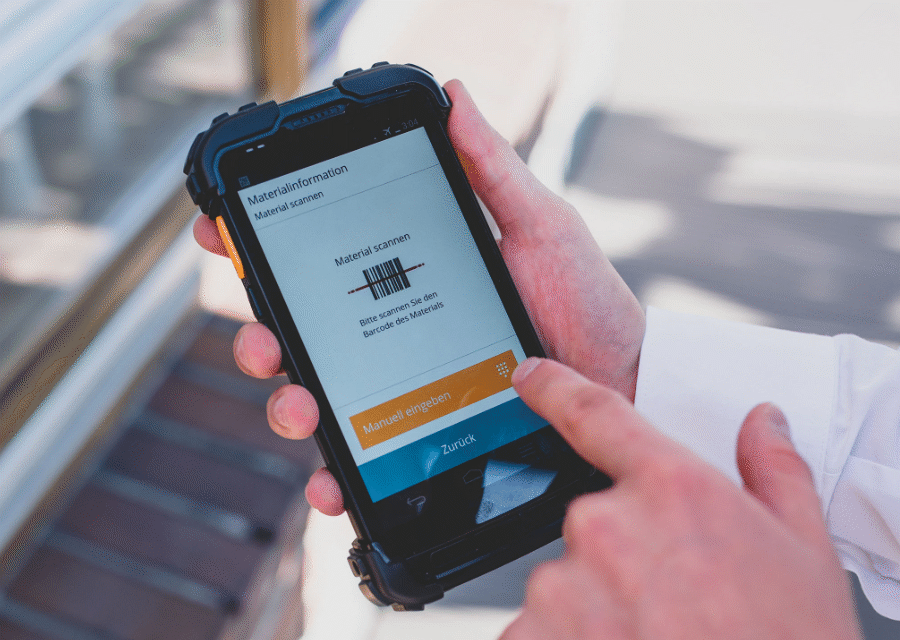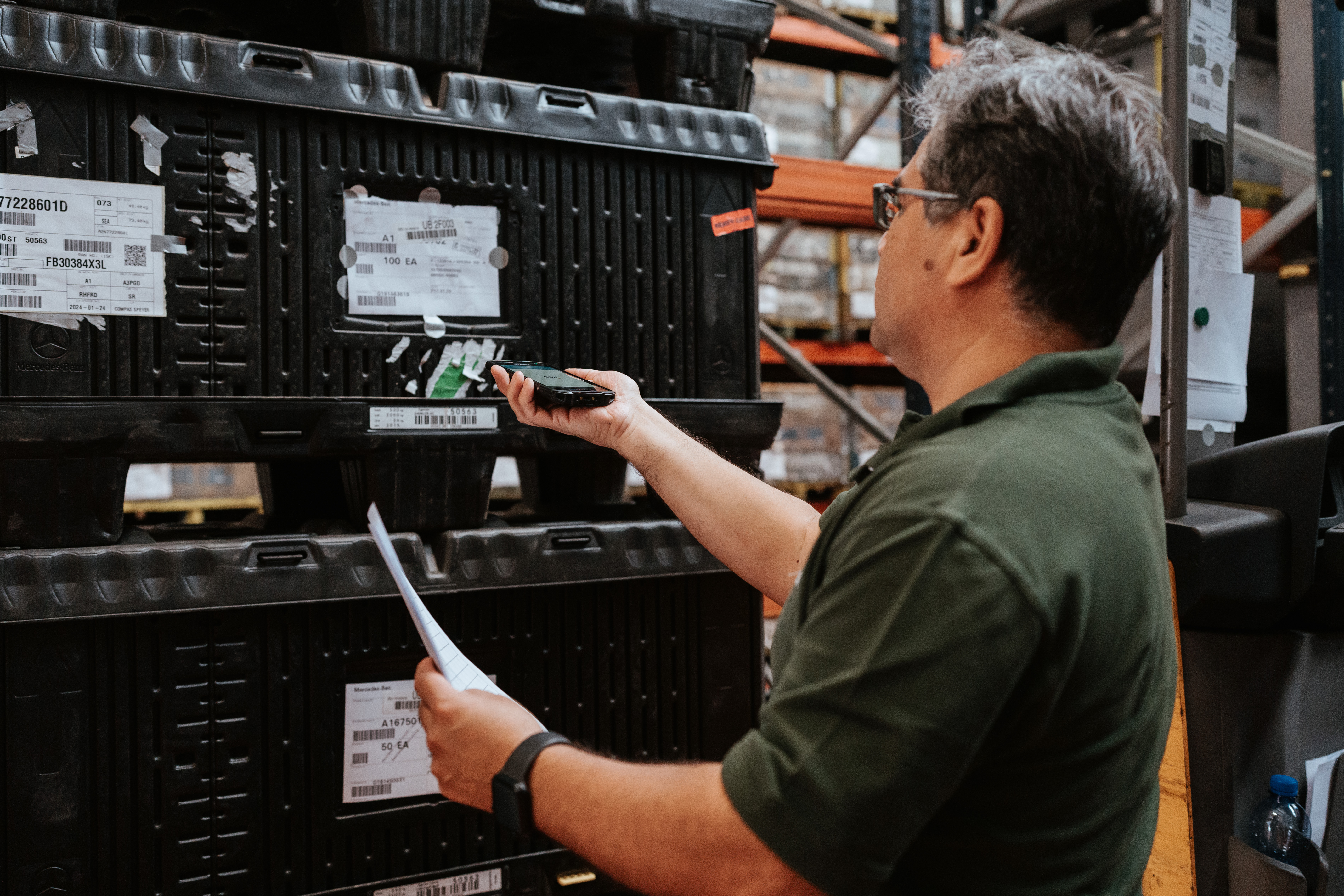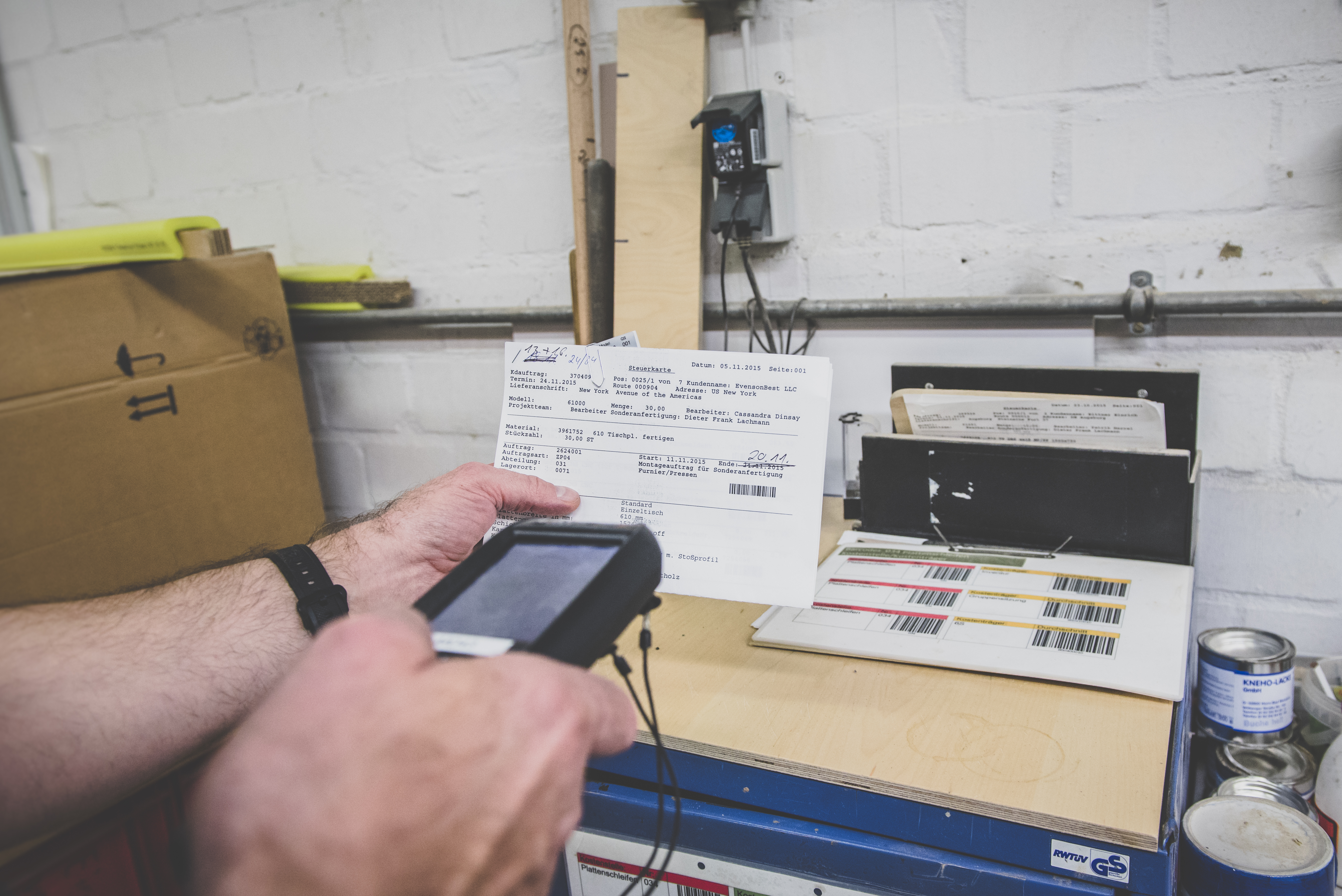Topics
In many companies, automated warehouse systems supplement classic rack storage. The stated goals of manufacturers and users include higher throughput and optimized inventory control. The benefits can be increased even further when an SAP MDE solution communicates directly with the lifts, accelerating putaway and retrieval processes in SAP WM or SAP EWM for employees.
Modern Warehouse Technology is Gaining Importance
The market for warehouse automation is large. In this context, automated warehouse systems are one component—and they are being used by more and more companies. The names vary, but functionally, the systems offer comparable features:
- Automated warehouses
- Vertical lifts
- Shuttles
- Paternoster storage systems (vertical carousels)
These automated warehouse systems are offered by full-service logistics providers like SSI Schäfer or by specialists like the Swiss companies Kardex or Hänel.
The Added Value of Storage Lifts
Where does the use of such warehouse technology offer added value? Automated warehouses have an immediately recognizable benefit wherever there is limited storage space—ideally paired with high ceilings and used for small parts that are not stored by the pallet. Furthermore, providers advertise that these systems increase the speed of putaway and picking.
.webp)
Accordingly, vertical lifts play to their strengths in scenarios:
- where you want to store small parts compactly and automatically, or
- where containers or trays need to be stored in a space-saving and secure manner.
Specifically, storage lifts are often found in spare parts storage, tool storage, or as small parts storage for production supply.
Who Manages the Inventory: SAP or the Storage Lift?
These systems usually offer their own integrated warehouse management. This is understandable, and for the autonomous use of the lift, such an inventory management system is essential. However, when a storage lift is used in an SAP-managed warehouse, the question of integration into such a landscape inevitably arises. The two systems must communicate with each other, reconcile inventory, and potentially translate transfer orders or warehouse tasks from the leading SAP system—if SAP WM, EWM, or Stockroom Management is in use—into jobs for the lift, and vice versa.

Learn everything about modern mobile SAP apps in warehouse and production.
In SAP-controlled intralogistics, the following constellations can exist:
- The storage lift has an SAP interface
- The storage lift does not offer SAP integration
In both constellations, a mobile warehouse solution can significantly increase the productivity of lift-related processes. This is because the physical processes of putaway and retrieval are typically always accompanied by manual employee activities. For example, for a retrieval, an employee at the lift enters order numbers, material numbers, quantities, batches, etc., and then… waits. Waits for the lift to retrieve and open the desired storage bin or tray.

This may only cost a few seconds for each individual process. But ask yourself this: how many putaways and retrievals do you process from a storage lift daily, weekly, or monthly? And how much time does each of these processes actually take at your facility?
This is where a mobile solution—or to put it colloquially, a handheld scanner solution—can unlock valuable potential. This is done simply by intelligently integrating a smart scanner app into the processes, which in turn exchanges data with both SAP and the storage lift, without the employee noticing a thing. Here are two examples.
Example: Ontego Communicates with the Hänel Lift and SAP
In this case (see the Success Story), Lean-Lift automated storage systems from the Swiss manufacturer Hänel are used.
The Initial Situation: The Hänel lifts had their own inventory management at the bin level, which was synchronized with the inventory management at the storage location level (SAP IM) in SAP. However, SAP did not know which specific bin or tray a material was on. A few more facts: The duration of manual data entry at the lift was between 30 and 60 seconds per job. Monthly, there are between 250 and 400 warehouse movements involving the Hänel lifts.
The Process: Initially, this led to manual reconciliation processes with a corresponding expenditure of time. Also, the manual entry of order information—such as the material number (7 digits), the batch (9 digits), or the date for the FIFO strategy (8 digits)—was time-consuming and error-prone.
.webp)
The Mobile Solution: Against this backdrop, an automated synchronization of data via the MDE software—or more precisely, its associated server component—was conceived and implemented:
- The mobile device receives an SAP transfer order for putaway or retrieval from the lift.
- In the background, the Ontego app sends material numbers and other data to the lift.
- The employee puts away or retrieves the items and confirms the completed actions as required at the lift.
- Ontego communicates with the lift in the background and receives the transaction information from the lift.
- SAP receives the inventory changes at the lift from Ontego.
The Result:
A saving of 2 to 4 hours of work time per month through the integration of the MDE solution and the storage lift.
Example: Ontego Optimizes Putaway and Retrieval in Kardex
The Initial Situation: Multiple Kardex Shuttles, grouped in units of 2, are used in the company's small parts management. The company uses SAP Warehouse Management. The Kardex Shuttles are controlled via Kardex's own SAP function modules.
.webp)
The Process: In the classic workflow, for transfer orders with a source or destination bin in one of the Kardex Shuttles, an employee enters the desired tray on the shuttle's monitor and waits for it to be provided by the shuttle. This happens for every process, potentially at multiple shuttles one after another. The requirement was to optimize the processing of TO items—of which there are up to 15,000 per week—with the mobile SAP solution, so that the retrieval or putaway of goods could be done with the lowest possible waiting times. It was important to consider that the bin locations for individual items could be spread across multiple shuttles, and that the relevant trays should be requested in advance.
The Mobile Solution: The Kardex function modules are not remote-enabled and therefore cannot be called directly by the Ontego app. First, Z-modules were programmed, which then call the Kardex modules.
The procedure begins when an employee starts the "Putaway to Kardex" or "Retrieval from Kardex" function and selects a shuttle group; the selected shuttle group is then locked for other employees by Ontego. For that shuttle group, all open TO items in SAP are identified and pre-sorted by the application. In this specific case, the filters are the storage type and the requirement type.
TO items belonging to the shuttle group are loaded from SAP. Following coordination, only TOs with a defined indicator and requirement type are loaded. Ontego "sorts" the items, if possible, alternating between Shuttle 1, Shuttle 2, Shuttle 1, Shuttle 2, …
- When the employee then starts the putaway/retrieval process, the first item is requested directly in the Kardex system via a Z-module. Confirmation is done on the Kardex display.
- If an item exists in the second shuttle, it is requested in parallel and in the background by the Ontego app.
- In the Ontego app, the employee will always see the current TO item. The app tells them which shuttle to go to.
- Ideally, the next item is in the second shuttle, and the tray that was requested in advance is already there. In the background, the next item after that is already being requested. In this way, the two shuttles in a group are requested one after another, and the open TO items are processed.
- Finally, the shuttle group is "released" again in Ontego.
The Result:
- Time saving of 15 to 20 seconds per item
- Time savings add up to 62 to 83 hours, or about 2.5 to 3.5 days, per week

Conclusion
The two selected examples show how logistics and warehouse managers can unlock dormant potential in their processes today. Modern solutions for mobile data entry with SAP can do more than just scan barcodes. Via interfaces, these optimized MDE solutions exchange data not only with SAP but also with third-party systems like automated storage lifts. And through the targeted partial automation of processes, they enable measurable time savings and productivity gains.

Optimize your warehuose easily and budget-friendly with the Ontego subscription model.
.webp)
